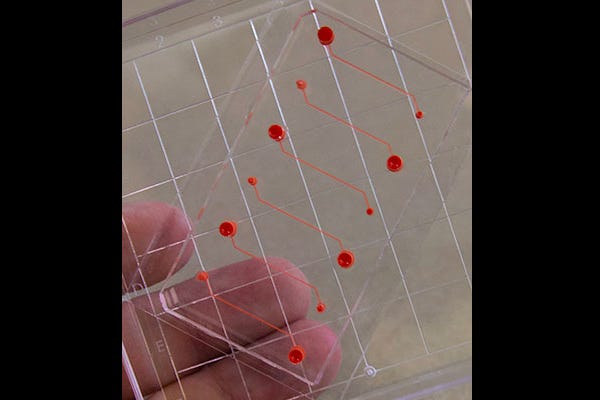Blood Clotting on a Chip
August 23, 2016
A microfluidic device created at Harvard University's Wyss Institute successfully emulates the way the endothelium and circulating blood interacts. The Wyss Institute research group microengineered hollow channels with human endothelial cells chemically "fixed" along the lining of the channels.
Accurately replicating this interaction in a device has proved challenging for a long time, according to the Wyss Institute. The research group at the institute was able to overcome this challenge with an important insight: Endothelial cells don't have to be "alive" in order to affect blood coagulation.
"It's a bioinspired device that contains the endothelial function of a diseased patient without having actual living cells, and this greatly increases the robustness of the device," said Abhishek Jain, PhD, a former Wyss Institute postdoctoral fellow who was recently appointed an assistant professor of biomedical engineering at Texas A&M University.
The device could prove effective when it comes to studying how endothelial inflammation effects blood clot formation, providing insights about atherosclerosis.
Continue >>
[Image courtesy of Harvard University's Wyss Institute]
About the Author(s)
You May Also Like





